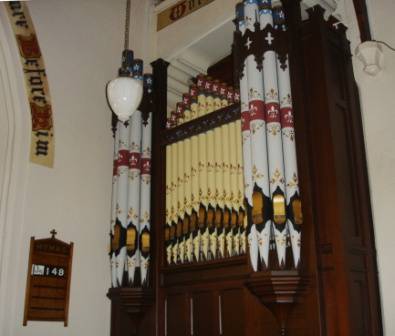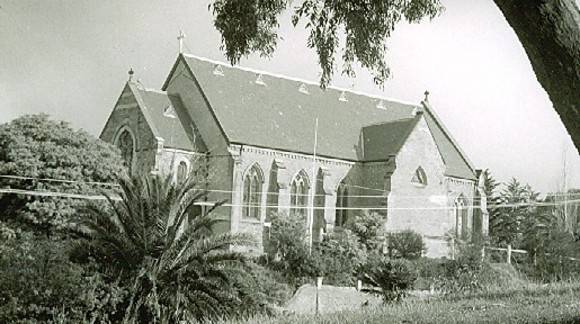| Back to search results » | Back to search page » |
|
Christ Church & Organ - Castlemaine Historic Area
Location8 Mostyn Street,, CASTLEMAINE VIC 3450 - Property No B0665
File NumberB0665LevelState |
|
Statement of Significance
Church Statement of Significance: One of the oldest substantial churches on the Victorian goldfields, of great interest for its use of local sandstone and for details such as the rose window and the faces carved on the crockets. This is a particularly charming and intact church, integrally involved in the history of the Castlemaine goldfield, and was the subject of a legal action between the architects and the trustees.
Church Classified: 'Local' prior 1967
Revised: 'State' 24/08/1989
Organ Statement of Significance: The organ at Christ Church, Castlemaine, was built as a two-manual instrument of 12 stops in 1888 by George Fincham; its cost was 350 pounds. In 1897 it was moved to its present position adjacent to the chancel and in 1953 it was rebuilt by George Fincham & Sons with electro-pneumatic action and a new detached console, but retaining the original case, diapered front pipes, internal pipework and windchests. The instrument is a typical example of a modest church organ built by Fincham is the 1880s, the original tonal scheme surviving without alteration.
Organ Classified: 'Regional' 19/09/1985
Revised: 'State' 24/08/1989
Part of Castlemaine Historic Area: Castlemaine grew as a result of the discovery of gold along Forest Creek in July, 1851. By December of that year the population on the field was greater than that of Melbourne. In 1852 Mr Templeton surveyed the township of Castlemaine and in 1853 the first action of the town site was held.
The Castlemaine goldfield was allegedly the richest alluvial goldfield in the world. Such was the prosperity of the diggers that the townsfolk were optimistically expectant of Castlemaine becoming Victoria's second city. The prosperity of the diggers and the optimistic townsfolk is reflected in the high number of imposing buildings erected in the first few years of the town's life. However, the rich alluvial diggers were worked out within 15-20 years. From the 1870's the town's population began to drift away, but they left behind a rich legacy of the town's former prosperity in the form of its buildings.
Within the Castlemaine Historic Area may be found many items of significance. These range from intact nineteenth century streetscapes composed of imposing public buildings to simple miner's cottages. Within the historic area there are a number of identifiable component areas, each telling an important part of the history of Castlemaine. In addition, there are many other items of significance outside of these areas, but still within the historic area. These include the former steam flourmill, the Church of England, the Congregational Church and Forest and Barkers Creeks.
Despite the town's topographical confinements to the valley of the two creeks, the wide streets and large buildings convey an atmosphere of grand spaciousness in this central Victorian goldfields town.
Classified: 01/12/1982
Group
Religion
Category
Church





